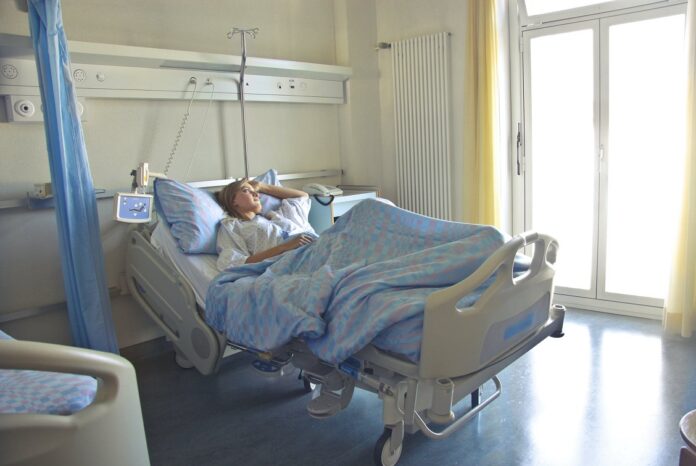The healthcare industry is abuzz with innovation and technological advancements. Presently, all healthcare sectors and industry leaders worldwide are striving for one goal: developing a COVID-19 vaccine for mass-production. As vaccine processes are rolling out globally, governments and healthcare leaders are taking measures to address weaknesses exposed by the pandemic. The coronavirus outbreak was an overwhelming and unprecedented crisis, and it exposed rampant inequality, technical failures, and other weaknesses.
Healthcare systems are recovering from the shock and advancing towards innovation to increase their performance capacities. One of the reformative priorities includes enhanced patient care, reducing healthcare costs, and delivering quality care.
Keep reading to learn more about healthcare innovations and how professionals can enhance patient care and treatment outcomes.
Specialized & Advanced Training
Human resources are the biggest asset of a healthcare facility. Trained physicians, skilled surgeons, dedicated nurse leaders and practitioners, and technicians define the quality standards. Medical professionals and nurses work together with technicians and other staff members to enhance patient care quality and outcomes.
Doctoral nurses, specialized surgeons, and experienced physicians deliver superior quality care standards. They are well-equipped with advanced diagnostic, healing, and medicinal skills, which allows them to alleviate pain and ensure comfort. Nurses with advanced training help patients with chronic pain and life-threatening illnesses manage their symptoms more effectively. Medical professionals continuously work on getting the latest medical certificate programs so their patients’ needs are always top priority.
The administrative and non-medical staff of a healthcare facility are also involved in patient care. They devise procedures and standards that allow flexible payments, affordability, efficiency, and immediate attention. Those who aspire for a healthcare career can explore many rewarding non-medical career paths, such as health educators.
Have you ever wondered what can you do with an allied health degree? It can open up several lucrative career paths, including administrative roles, patient representatives, quality assurance experts, and community health workers. Patient quality assurance experts and administration leaders innovate and improve standards to enhance care across multiple healthcare settings.
Improving Accessibility & Communication
The ongoing pandemic has sped up several innovations that were poised to penetrate patient care, such as telehealth. Today, patients enjoy the convenience of telehealth, as it supports efficient communication and enhances accessibility.
Accessibility and transparency are instrumental in ensuring quality care and favorable treatment outcomes. How easily can a patient connect with a physician or nurse practitioner? Does the patient have access to home care, post-surgical consultation, and digital medical records? Can patients enjoy the affordability and quality care?
In 2021, accessibility and innovative healthcare solutions empowered patients significantly. Technological solutions also reduce the burden for healthcare facilities and professionals by enhancing coordination and communication.
Patient Data Handling & Processing
Information management is essential to deliver quality care as it improves the handling, processing, and sharing patient data. Hospitals and healthcare facilities worldwide are embracing artificial intelligence (AI) and innovative data management solutions.
These information handling tools facilitate early diagnosis, monitoring and managing symptoms, and examining anticipated outcomes of treatment choices. The adoption of these sophisticated information handling tools has given rise to several non-medical career paths.
Healthcare facilities rely on data experts and the expertise of a health information manager to streamline efficient solutions. These experts enhance accessibility and coordination so healthcare practitioners can interact with and observe patients more closely. Information managers also work to improve data security and protection measures.
Setting Quality-Driven Goals
Improving patient care and treatment outcomes requires healthcare facilities to set practical and measurable goals. But first, they must identify weaknesses and areas of improvement. A quantitative analysis can help them examine their models and strategize to innovate them.
Hospitals can aim to improve patient safety and control side-effects of adverse medications. They can adopt leading techniques and research-driven treatments and undergo regular training and workshops to improve skillsets. The administrative staff can develop procedures that reduce time delays and failure-to-reduce rates by enhancing coordination.
Hospitals can also improve care by promoting racial and ethnic equality in their workforce and patient intake processes. All processes and treatments must honor the choices and autonomy of the patient. Nurse leaders and practitioners must actively partake in awareness efforts and help caregivers understand symptoms and interventions.
A Balanced Team of Professionals
A healthcare facility is known for its skilled healthcare practitioners, miracle-working surgeons, and dedicated team of nursing staff. Indeed, medical professionals, technicians’ skill sets, expertise, and experience shape the hospitals. Hence, healthcare facilities are competing to acquire the talent of renowned and experienced healthcare practitioners.
Hospitals and clinics can ensure quality patient care by creating a balanced team of talented and experienced healthcare practitioners. A balanced team includes technicians, IT experts, clinical experts, communication handlers, administrative leaders, and project managers. The combined effort of a dynamic healthcare team promotes superior patient care quality and higher survival rates.
Conclusion
Hospitals strive to advance and innovate to overcome human limitations and errors that give rise to failure-to-rescue rates. A healthcare facility’s reputation stems from its ability to cure patients and deliver quality care at affordable rates successfully. Hospitals embrace a series of machines, sophisticated systems, and tools to create a facilitative environment that allows superior coordination.
In 2021, healthcare organizations can improve patient services by standardizing procedures and embracing innovative care protocols. It is crucial to design efficient systems that promote enhanced communication between patients and medical providers. These systems also allow a superior understanding of medical conditions, symptoms, and anticipated treatment outcomes.
Wearable devices and innovative IT applications help healthcare facilities reduce costs and improve patient outcomes. The most viable solution is to create a realistic and executable plan with specific protocols to measure improvements.

